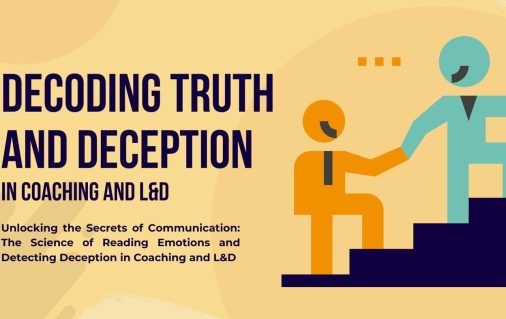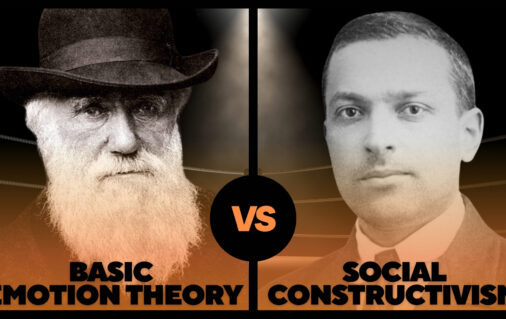What is Emotional Intelligence?
Defining Emotional Intelligence
Emotional Intelligence is ‘The ability to perceive, understand, and influence our own and others’ emotions, across a range of contexts, to guide our current thinking and actions, to help us to achieve our goals.’ (Cliff Lansley, EIA Group)
Emotional intelligence originates from the concept of social intelligence (Thorndike, 1920). It was further influenced by the ideas of Gardner (1999), specifically through the concepts of interpersonal intelligence (awareness of others) and intrapersonal intelligence (awareness of self). Recognition of EI began with the introduction of Gardner’s theory of multiple intelligences (Gardner, 1999).
There are many emotional intelligence definitions and some conflict with others. However, the Emotional Intelligence Academy’s (EIA) definition above provides a definition that highlights the common themes across the many definitions to offer a clear and comprehensive way of understanding this term.
Intelligence vs. Emotion
The concept of intelligence has been debated for many years. Some have claimed that a measure of intelligence like IQ can determine success professionally, academically, and personally (Gottfredson, 1998; Jensen, 1998). However, it’s unclear if this idea is scientifically sound.
Gardner’s theory of multiple intelligences and Thorndike’s concept of social intelligence began a discussion on the multi-dimensional aspects of human intelligence and how we learn and communicate. Since then, these areas have been explored, leading us to see that true intelligence is far more complex than we initially thought.
Goleman highlighted how the Latin root of the word emotion is motere (with a prefix ‘e’), meaning ‘to move’ and ‘to move away’, suggesting that emotions carry a corresponding an impulse to action (Goleman, 1995).
Darwin was the first to propose that humans express emotions through specific facial expressions that are universally the same, regardless of someone’s race, culture, status or local. He added that this was because facial expressions are essential for survival and to signal our emotions and physical state to others as a way to communicate our needs.
During Darwin’s time, many scientists believed that emotions were related to personality and were not ‘real’ in the same way that logic and intellect were real. Darwin, however, challenged this concept with his idea that anger, fear, and disgust were complete emotions on their own and more like individual entities. Research throughout the twentieth and twenty-first century has shown that Darwin’s view of emotions was correct.
Darwin was the first to propose that animals also experienced emotions. The study of animals in this regard was long considered ‘bad’ science because science valued language and verbal self-report in those times. How could we tell if an emotion exists if the species can’t explain their experience to us?
This led us to believe that infants didn’t have feelings until they learned to speak, which now seems like an insane concept. Although words can be used to explain or communicate our feelings, they do not produce the emotions that we feel. Even when we cannot verbally articulate our feelings, we still feel the emotions.
Historically intellect and emotion have been viewed as opposites (Lloyd 1978). However, in the end, our daily choices and our most important decisions are not made by logic alone; emotions play a significant role in our lives. Sometimes our emotional wisdom can surpass our mental knowledge in the form of intuition. If we develop the intelligence of our emotional mind along with our rational mind, we can reach an unparalleled level of success in our relationships and achievements (Goleman, 1995; Epstein, 1994).
Emotional Intelligence Competencies: What does it look like?

There are three main areas of emotional intelligence that we can learn to develop skills and expertise in. These areas concern ourselves, others, and context. In each of these areas, we can move from awareness to understanding and then ultimately to be able to influence.
Self:
Emotional intelligence relates to how we interact with others, our awareness of our own emotions, and how we express them. Aristotle stated that knowing yourself is the beginning of all wisdom.
Emotional intelligence allows us to develop self-awareness, which is becoming aware of our body sensations related to the emotions we’re experiencing and our thoughts and how they relate or are impacted by or to our emotions.
Next, we can develop self-understanding. This helps us recognize what these reactions and emotions might mean, what they’re telling us, and think about what could have triggered them.
The final level of mastery in the area of emotional intelligence in terms of self, is self-influence. When we can manage our emotional responses and catch an emotional reaction before it takes over, we showcase a more mature level of emotional intelligence. At this point, our emotional intelligence becomes very practical and valuable in helping us reach our goals and manage our emotions successfully.
Others:
These also apply to our interactions with others. Through developing emotional intelligence, we can become more aware of our interaction with others and really understand what another person is saying – and possibly what they mean. We can learn to notice their baseline and really listen and see them. The term baseline refers to how someone behaves typically.
Over time this skill can develop into understanding others (rather than just being aware of them); this means really paying attention to the meaning behind what others are communicating. This means that you consider their thoughts, feelings, and beliefs and make sure that you really understand the other person by asking clarifying questions.
Emotional intelligence can help us influence others, which can help everyone get what they need from an interaction, e.g., emotional connection, conflict resolution or problem-solving. Emotional Intelligence can also assist us in having the correct type of interaction so that you and your conversation partner, or team, reach your goals.
Context:
The last area that emotional intelligence can help with, and an area that might be surprising, is context. Context is a crucial element to consider. It can significantly impact our interactions and how we and others behave. The first step is to be aware of the context.
There are two categories of context to notice: the macro and micro contexts. The macro context refers to culture, politics, or country. Through understanding this, we can consider how someone’s background or the current contexts that they are in might influence their behaviours, expressions of emotion, or reactions. The micro context refers to what is being said at that moment and how it is coming across. Factors like your own body language and tone of voice, how a room is arranged, or the ambient music are all micro contexts that can influence someone. Interestingly, languages can have different words to explain emotions, limiting our understanding of emotion.
For example, the German word Schadenfreude describes the emotion of being happy at another’s misfortune. It has no word to translate into other languages directly. Similarly, Japanese does not have a word for the emotion of jealousy, so this emotion can feel confusing because there is not the same type of language to explain it.
Once we become more aware of context, we can pay more attention to it to better understand the situation by considering how it might impact a specific interaction.
For example, suppose your chair is too close to someone. In that case, it might make them feel uncomfortable, or if the music in the restaurant is quite loud or fast-paced, it could be adding stress to an interaction. Or, if your conversation partner is from a different country, culture or faith, they may feel uncomfortable in a particular environment. Or, if they are of another gender or ethnicity than you, they could feel emotions related to that difference unrelated to the actual interaction or what is being said.
Social expectations and stereotypes related to gender roles, for instance, can become an important factor in an interaction’s context that can influence how someone may express emotion and display, or hide, their emotions. Mead suggested that gender roles are created by social conventions rather than innate differences in our nature. Mead (1935) discussed how Western cultures’ belief in these innate feminine and masculine qualities only makes these issues worse.
Aspects like culture can significantly impact how someone expresses their emotions and how they may feel about emotions in general. Even someone’s upbringing can create feelings of shame around certain emotions; this can relate to how they express these emotions. Suppose you can see where someone is coming from in this regard. In that case, you may be able to adjust how you communicate to make your interaction more successful and respectful.
Lastly, emotional intelligence can help us influence how the context may impact the conversation by using context strategically.
For example, suppose you’re worried that a power imbalance might limit the effectiveness of your upcoming hiring interview. In that case, you might want to consider the room’s layout.
For instance, if the chairs are close to a corner and your chair is blocking the exit, it would be best to move the interviewee’s chair closer to the exit instead and in a more open space. This will allow them to feel more comfortable because they are in a free and open area. Being close to an exit can create psychological ease because they can leave at any time.
Putting their chair close to a corner, with your chair blocking the exit, may create a sense of intimidation and feeling ‘trapped’. If this discussion was an interrogation, then you may prefer this kind of room layout.
This influence of the context can improve the effectiveness of the interaction and enhance the likelihood that your conversation partner will feel more comfortable. Through developing competency in these areas, we can begin to reap the endless benefits associated with high emotional intelligence.
Even the clothing you wear can impact an interaction! Through understanding colour psychology, you can choose apparel that makes you appear friendly (e.g., blue or white) or that gives an impression of high-class luxury (e.g., black and white) or that makes you seem intimidating and have more authority (e.g., red or black) and avoid colours that make you appear cowardly (e.g., yellow). In such ways, colours can even be used strategically when organizing the context of an interaction, for example, through art, room design, backdrop/background colours, and font or pen colours.
Of course, these details alone will not have a profound impact. However, together the overall context can, and does, impact interactions and emotions in very real ways, so do not underestimate context.
















